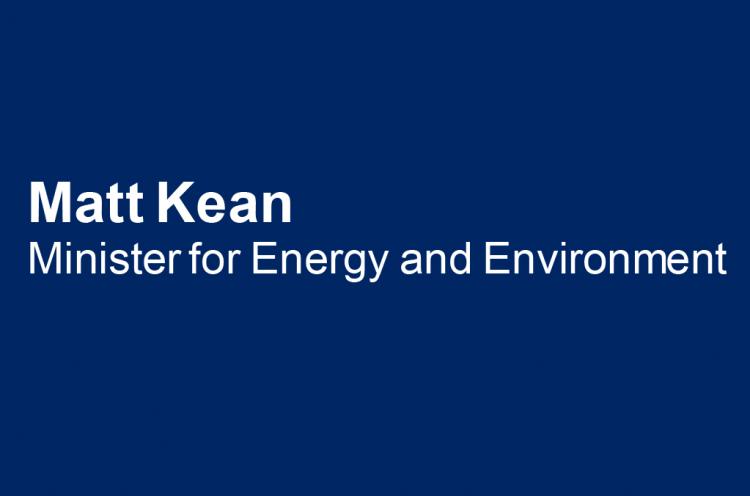
I am speaking to you from the traditional lands of the Gu-ring-gai people. I acknowledge them and pay my respects to their Elders, past, present and emerging.
Can I remind everyone that the land on which we gather is, was and always will be aboriginal land.
First up, I’d like to acknowledge the impact that the COVID019 pandemic has had on the volunteers who are the lifeblood of the member organisations of the Nature Conservation Council.
To work closely with other people is part and parcel of being an environmental campaigner, and I know many people have sorely missed the chance to meet with others.
I thank you all for the sacrifices you have made to help keep our community safe and I thank you for the work you do on the ground to protect our natural environment.
I’d particularly like to acknowledge the outstanding leadership of your executive officer Chris Gambion.
Whip smart, strategic, hard working, and absolutely dedicated to conservation, he is one of the best operators I have come across in my time in public life.
Now, Since this Council was founded more than 60 years ago, it has argued passionately for more national parks; to preserve our wild places for humanity, forever.
Conservationists joined the voices of scientists, who tell us that national parks are the key to building resilient populations for our threatened species.
In August last year, I set a target of adding 200,000 hectares to the national park estate in two years.
Today I’m delighted to announce today that we’ve smashed that target.
As of Friday, more than 270,000 hectares has been added to the NSW national park estate in little over 12 months.
On Friday alone, we formally reserved some 202,669 hectares – the largest increase to national parks in a single day since 2005.
The additions include the monumental Narriearra Caryapundy Swamp National Park, more than 153,000 hectares of extraordinary ecological significance, including a spectacular ephemeral wetland, over 25 threatened species and important Aboriginal and European heritage.
We’ve also grown the footprint of Capertee, Maria, Mungo and Sturt National Parks, to protect even more habitat, and most importantly it is now Government policy to create the Georges River National park between cambelltown and Wollondilly to protect the last remaining disease free Koala habitat in NSW forever.
This is a conservation effort of generational significance.
But it’s still not enough.
The climate is changing and the scientists’ advice to me is that we are still short of a critical mass of high quality habitat sufficient to ensure that our threatened species can survive and thrive.
So today I am announcing that I am doubling down.
Doubling down on our initial target, with a revised goal to have added 400,000 hectares – a million acres - in total to our national park footprint by the end of 2022.
It’s fair to say that our National Parks have never been more loved, and more appreciated, by our NSW community.
Visitor numbers are now at record levels.
We have a historic opportunity to enhance the way the community experiences our national parks and to showcase their value, and we are determined to make the most of it.
That’s why I will invest over $100 million in capital projects by the 30th of June 2021, building new and iconic walks, upgrading existing walking tracks and improving a suite of other infrastructure, like the now-completed Wollomombi Falls lookout in Oxley Wild Rivers National Park.
This is because our national parks should be there for everyone to enjoy and that’s why I am determined to improve the visitor experience.
We’re also boosting our frontline defence against bushfires, with more than $29 million in new funding for the National Parks and Wildlife Service as part of our response to the NSW Bushfire Inquiry.
We’re investing an additional $21 million to extend 125 front line firefighter positions.
To keep our firefighters safe, we will invest $1 million to retrofit the NPWS tanker fleet with radiant heat curtains and single point spray systems.
And we’ll spend $1 million over four years, to help wildlife injured by bushfires, including support for the State’s army of volunteer wildlife rehabilitators.
I’d like to say a few words about the preservation of koalas in the wild in NSW.
It’s an issue that worries you, it’s an issue that worries me, especially given the horrific toll that last summer’s bushfires took on our already-threatened koala population.
I can promise you this: koalas will not go extinct in the wild on my watch.
I’ve set a goal of doubling the number of koalas in NSW by 2050.
I am determined to do it.
If you want to protect Koalas you need to protect trees. The best way to protect trees is to expand and fortify our national parks.
I have convened the the best scientific experts in the land to design our plan to achieve my goal.
You’ll be hearing more about that from me in the near future, but I promise you this not a fight I am going to lose.
Everyone here knows that our state is facing a big challenge.
We have to reduce our carbon emissions to net zero by 2050, and we have to do support our economy to recover from the COVID-19 pandemic.
To help achieve both goals we are accelerating the creation of three priority Renewable Energy Zones located in the state’s Central-West Orana, New England and South-West regions.
By connecting multiple solar farms, wind farms and energy storage in the same location, Renewable Energy Zones capitalize on economies of scale and will deliver the reliable and clean energy our state needs.
While we want to move swiftly, we also want to ensure the Renewable Energy Zone has the support of the community.
That’s why we’ve repurposed the Energy Corporation of NSW – EnCO – to coordinate the zones.
EnCo will take a new approach to strategic planning and engagement that looks carefully at the land-use, environmental and economic impact of the Zones during both construction and operation.
The plan is to streamline processes for investors, while also ensuring community priorities are fully taken into account when decisions are made.
I know that people are worried about the risk of unchecked development and negative impacts on prime agricultural land, local ecosystems, visual amenity and Aboriginal and local heritage.
I assure you that we will keep consulting and be transparent about the cumulative impact of the infrastructure, that we will plan to minimise impacts and we will ensure economic benefits are equitably shared across the community.
As we enter another bushfire season, its risks exacerbated by climate change, investments like the growing our national park estate, Saving our Species, and moving to net zero emissions are even more urgent and important.
They are investments that will ensure we halt the decline of our natural environment and actually start to turn things around, so that we hand on a better and cleaner environment to our children.
I sincerely thank the members of the Nature Conservation Council for everything you do to help protect and preserve our natural environment, and I wish you a most successful annual conference.
